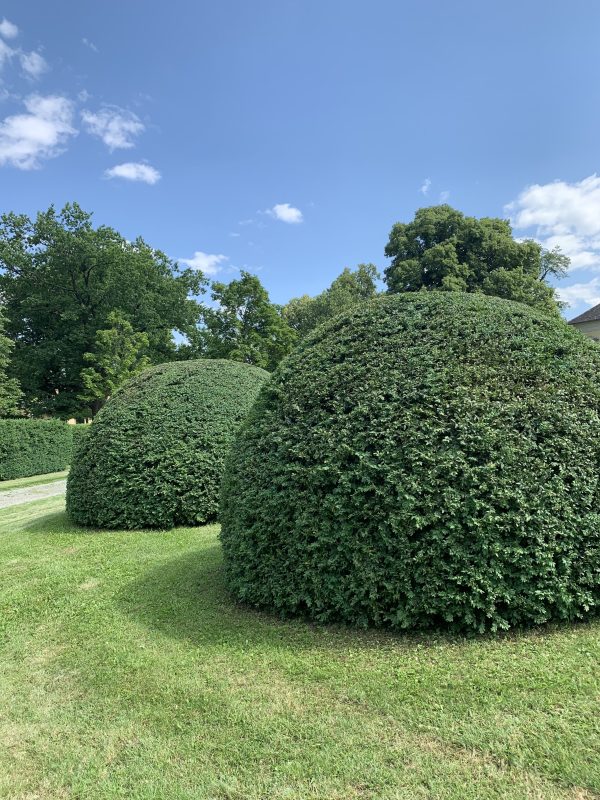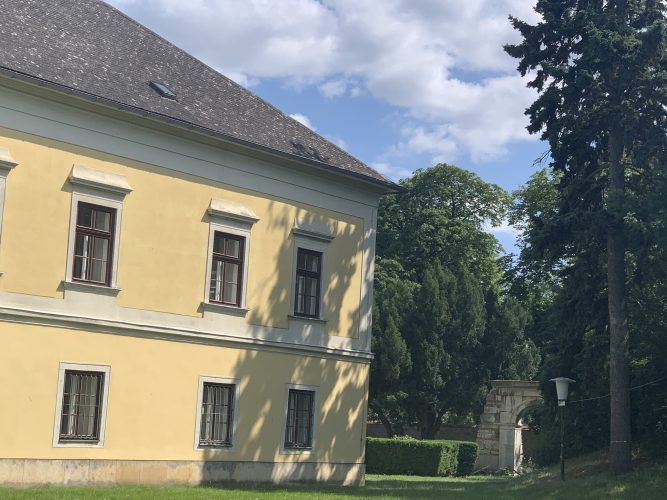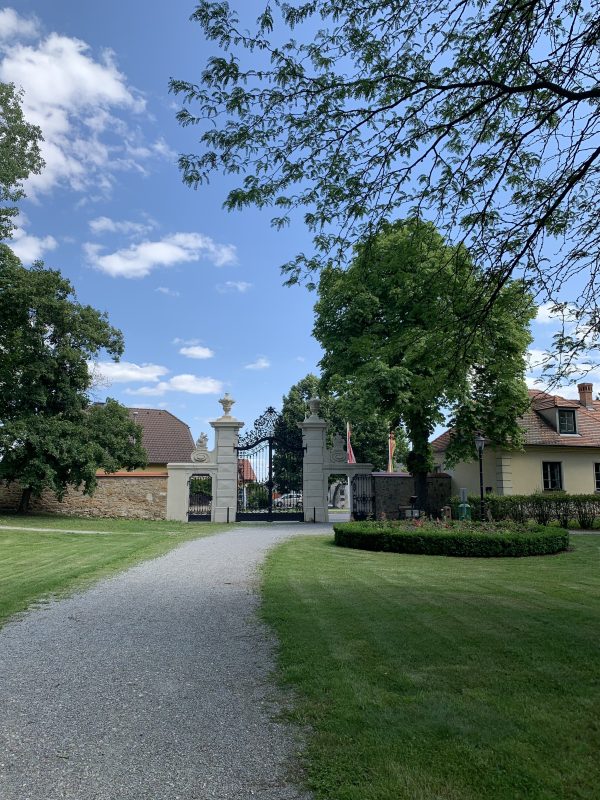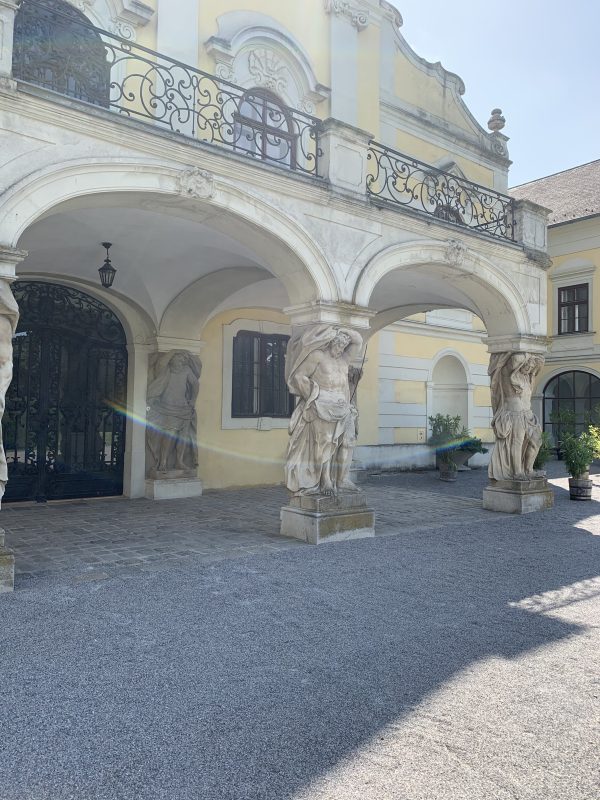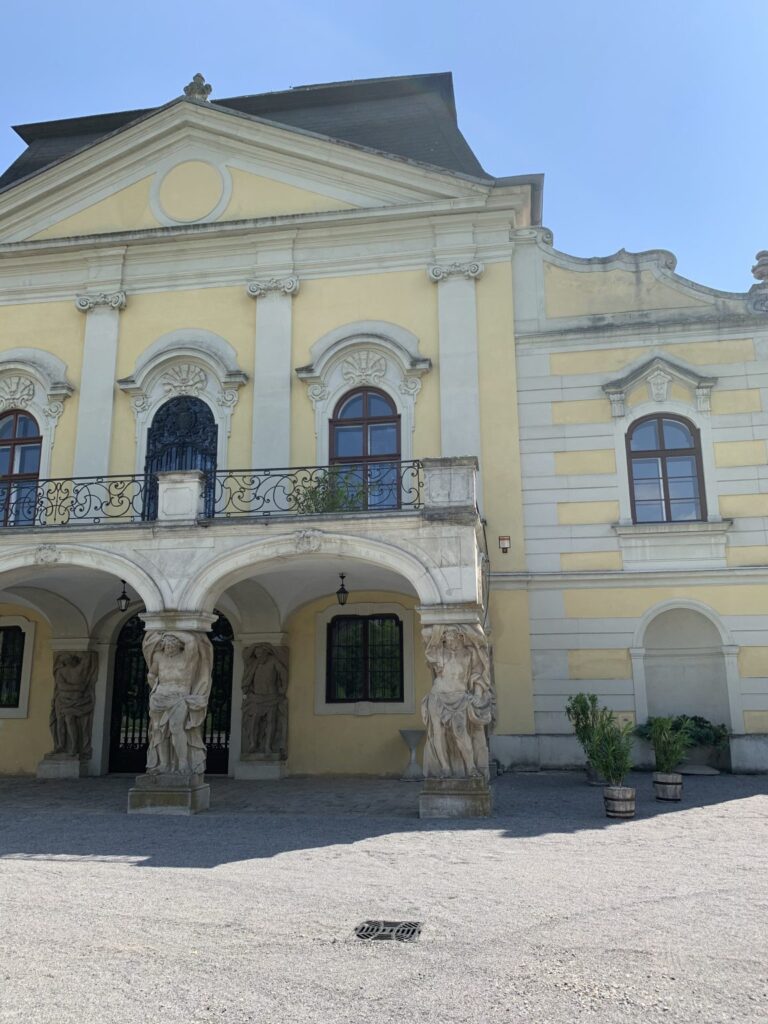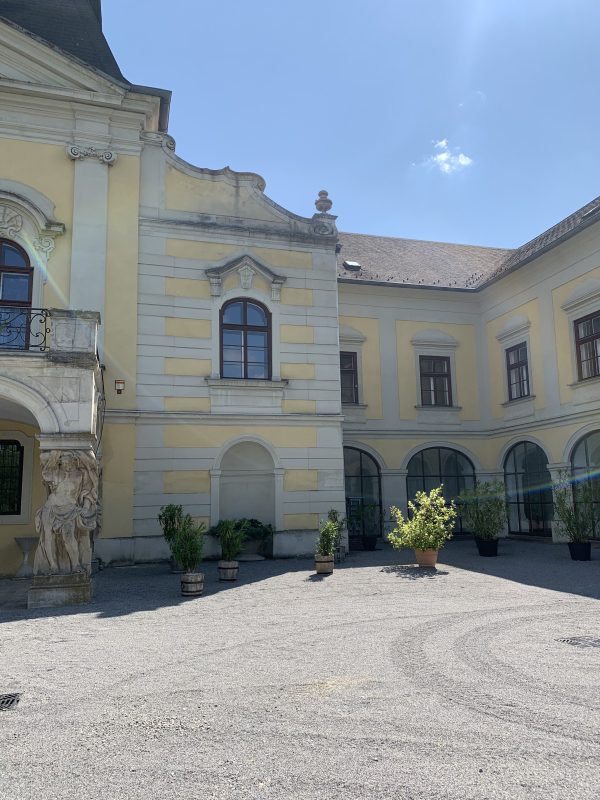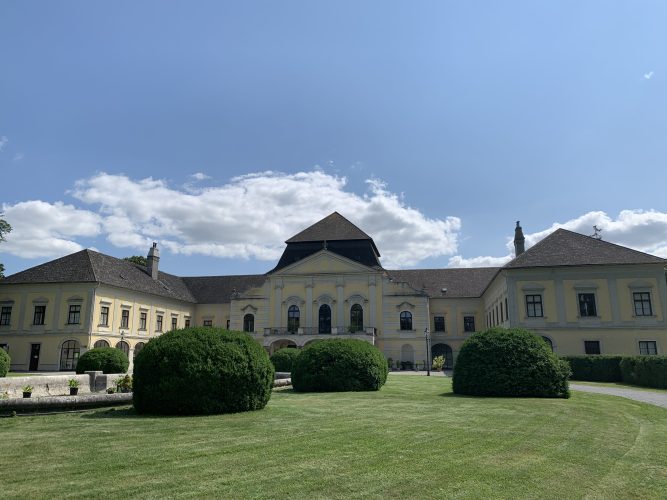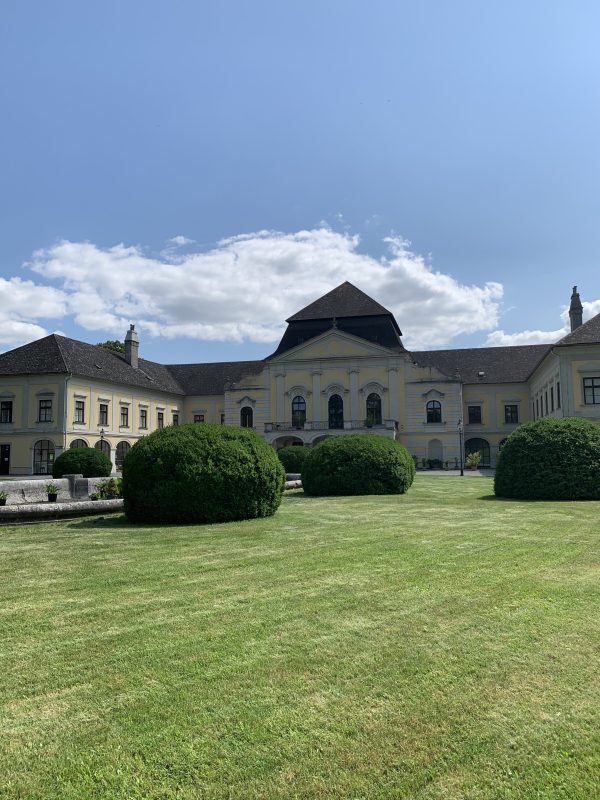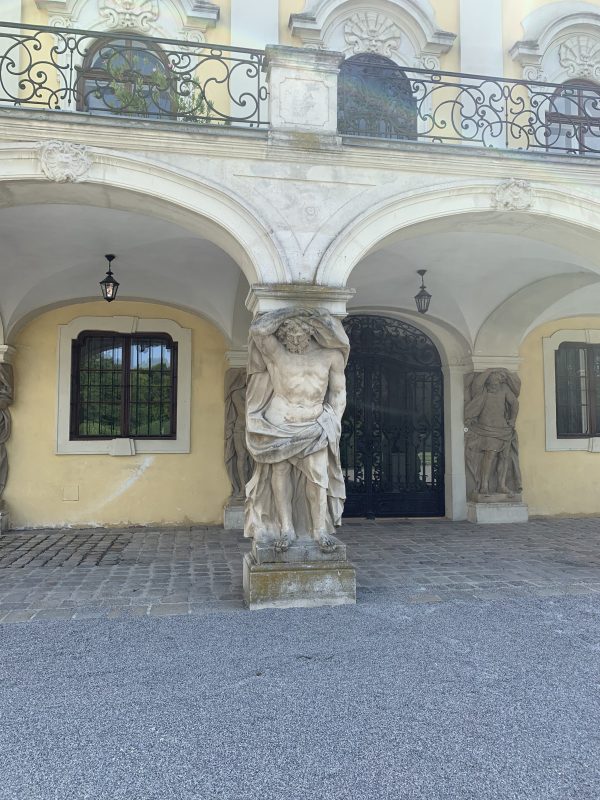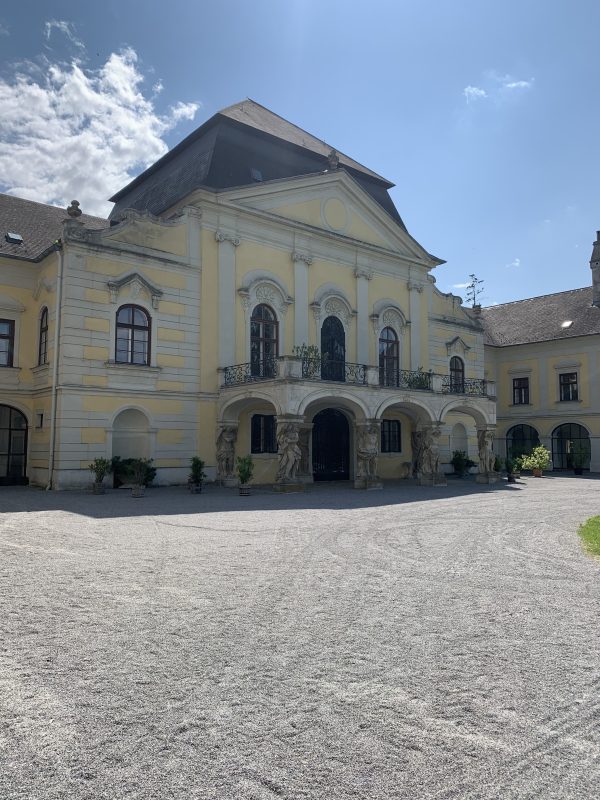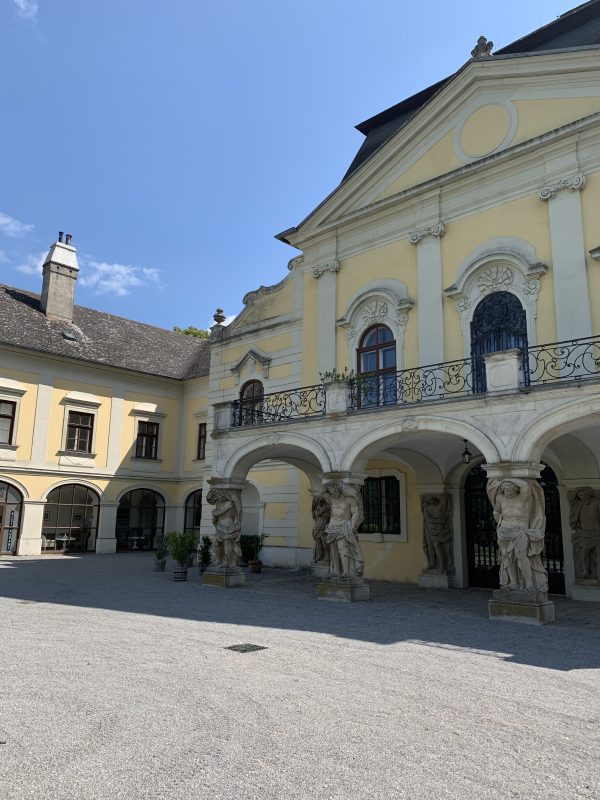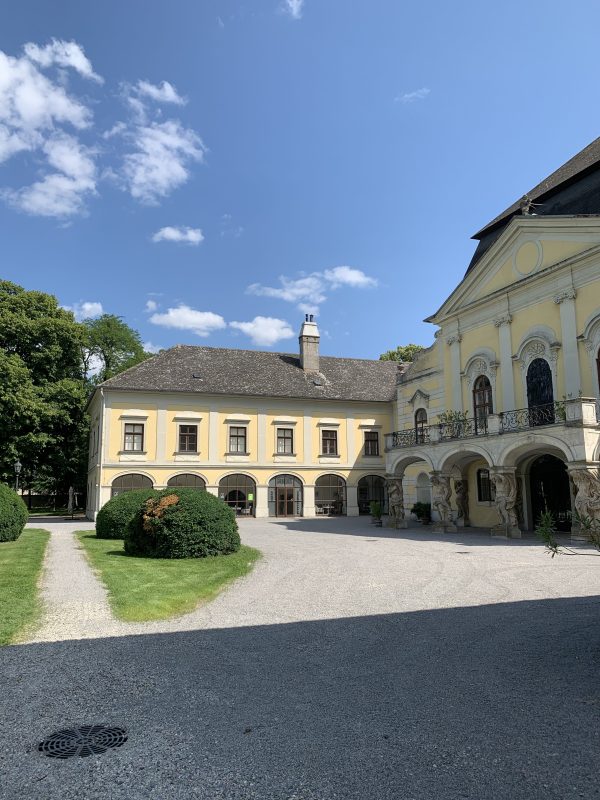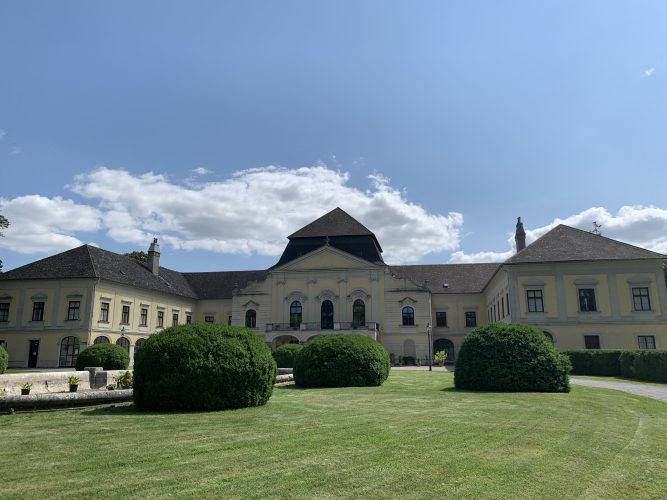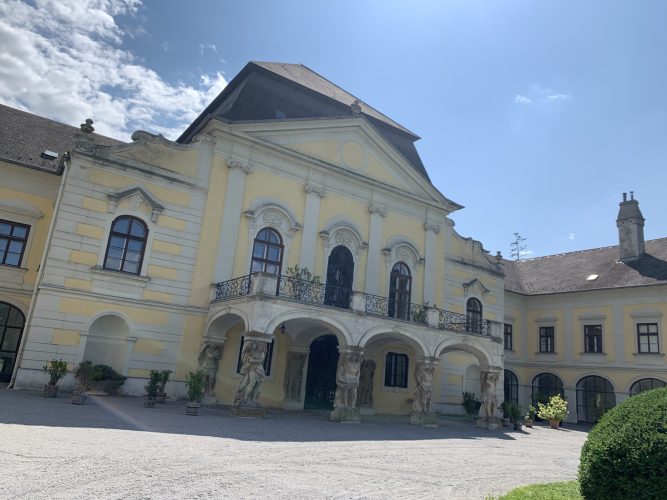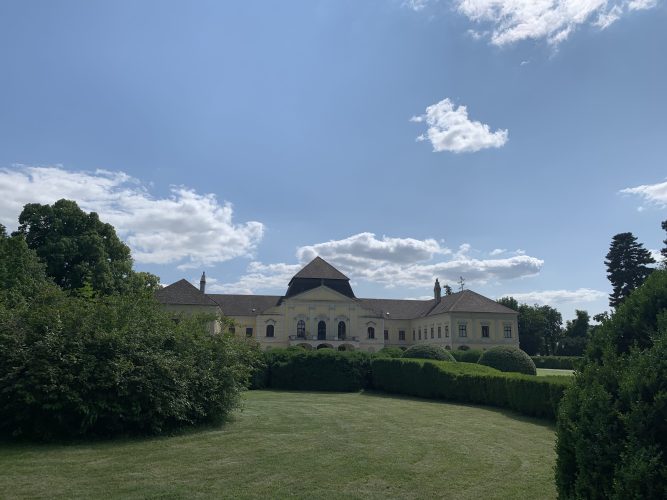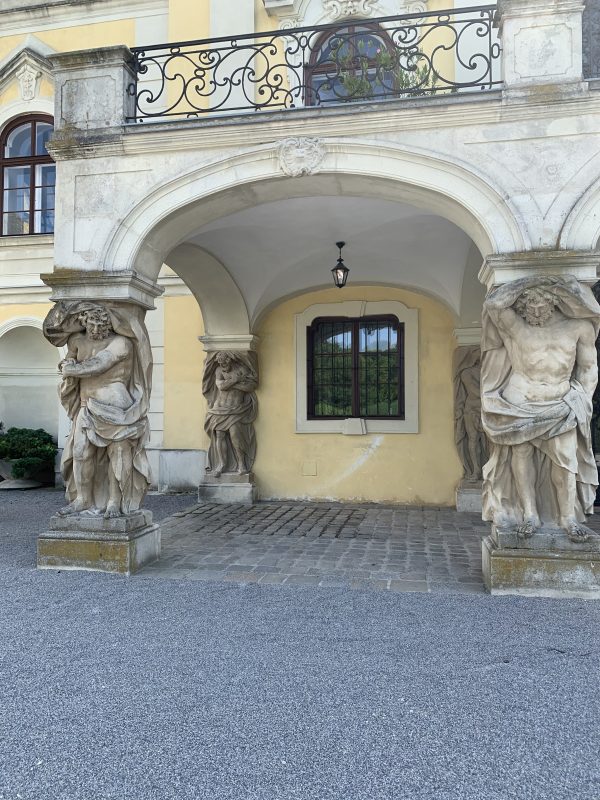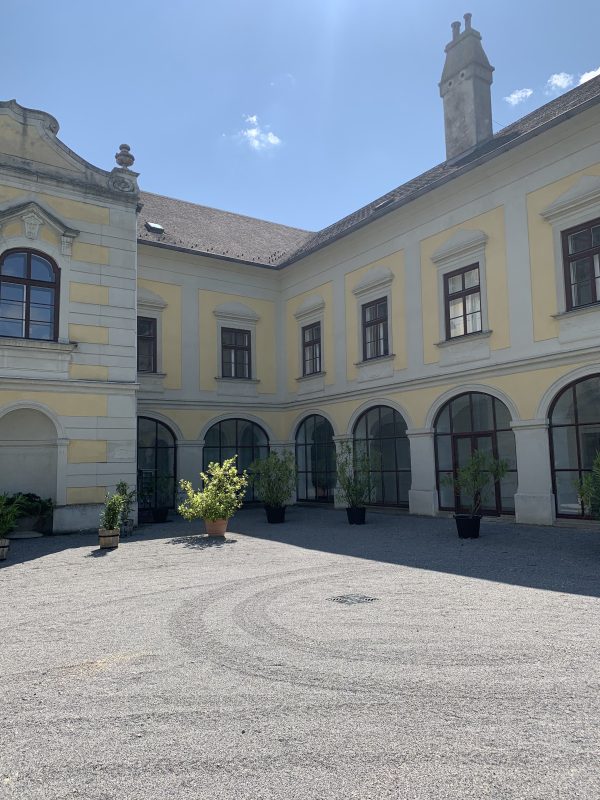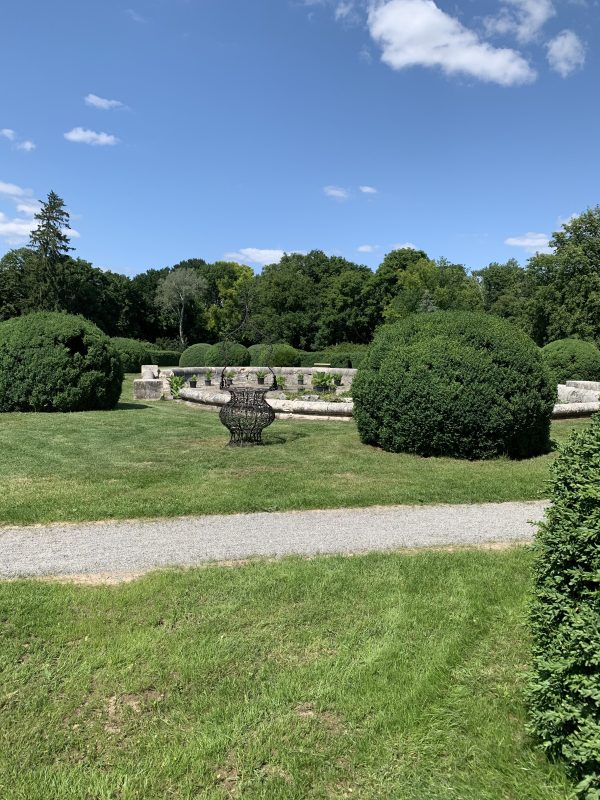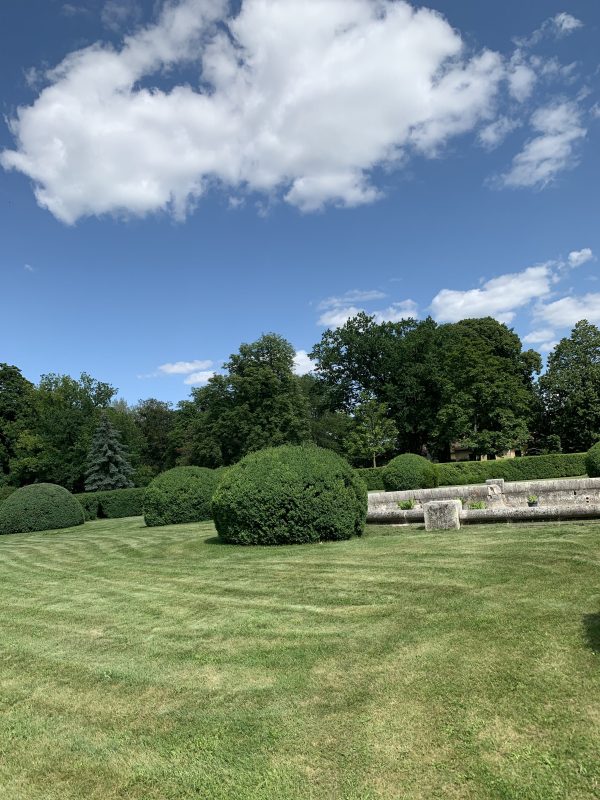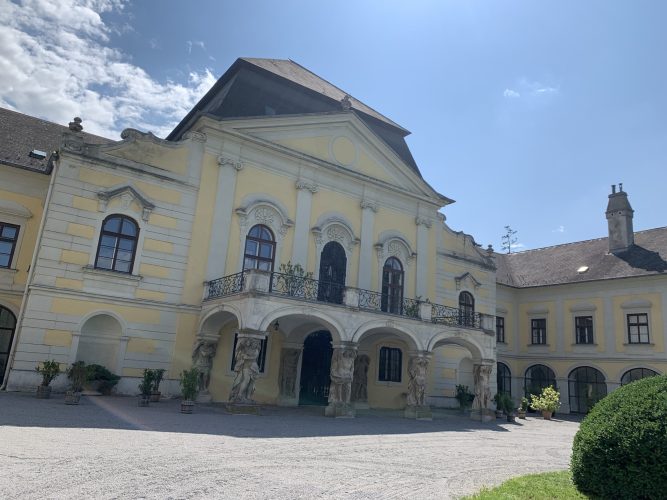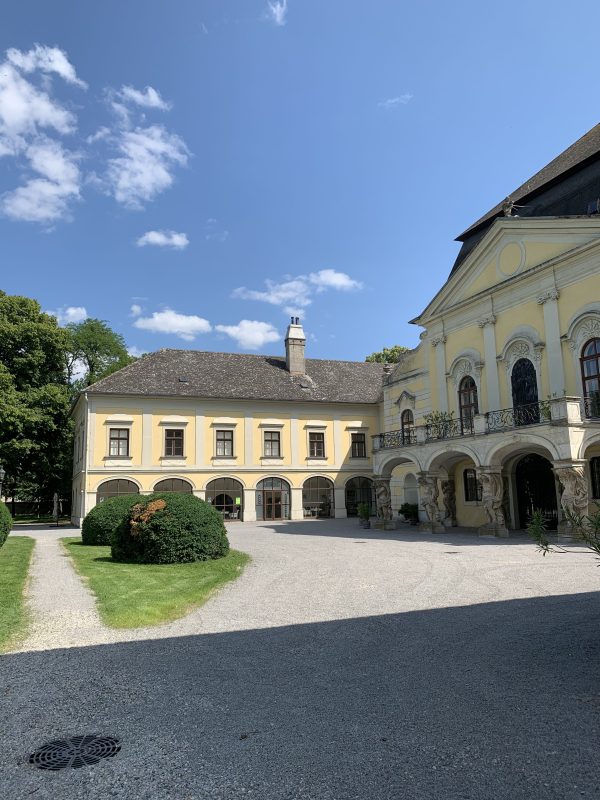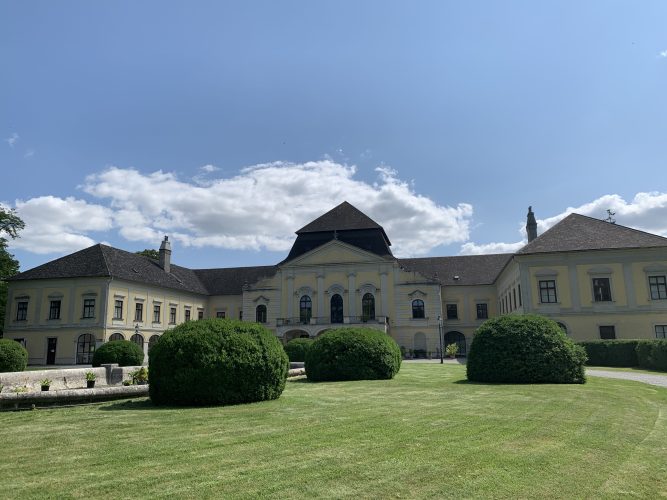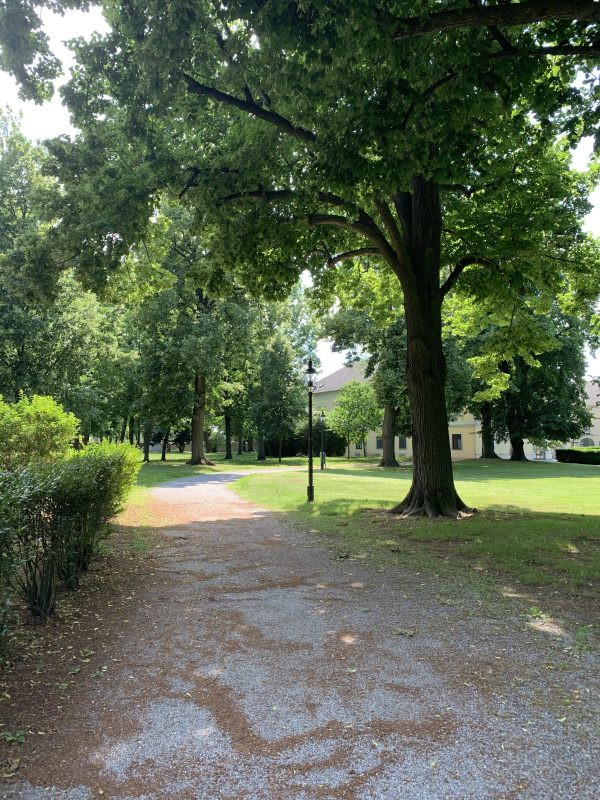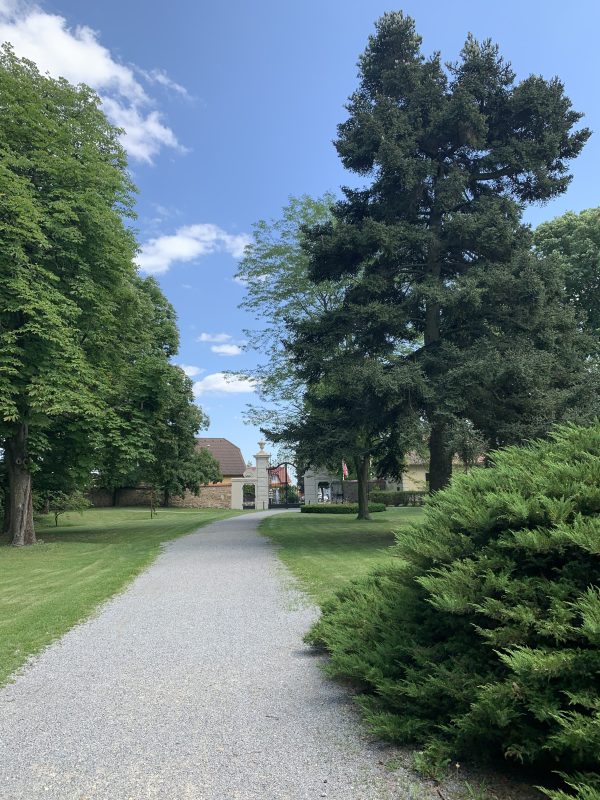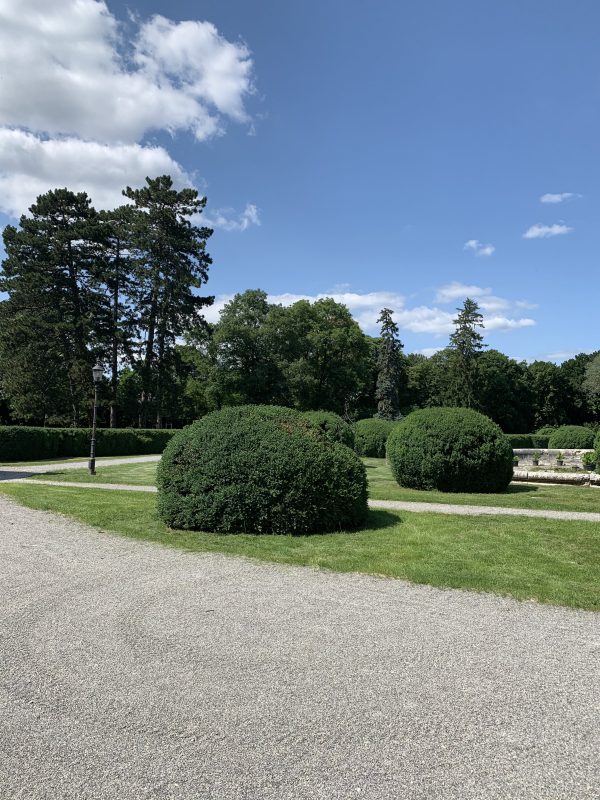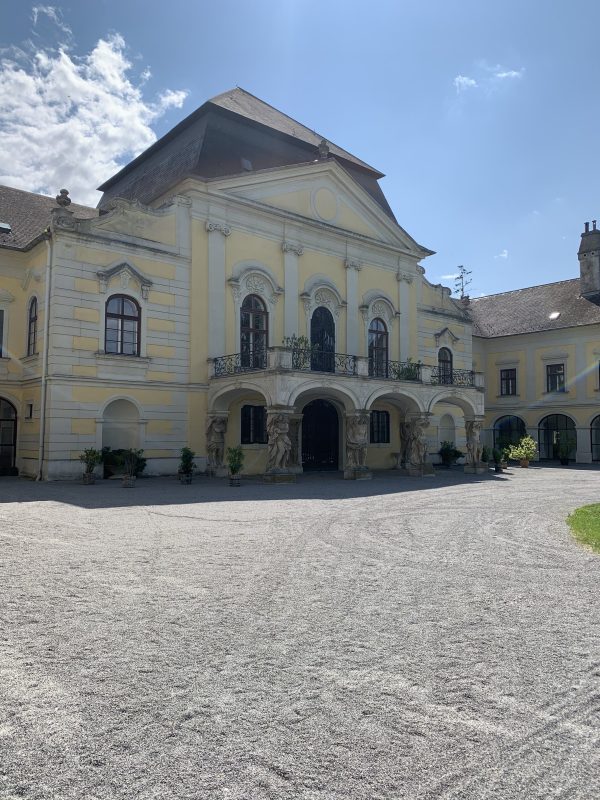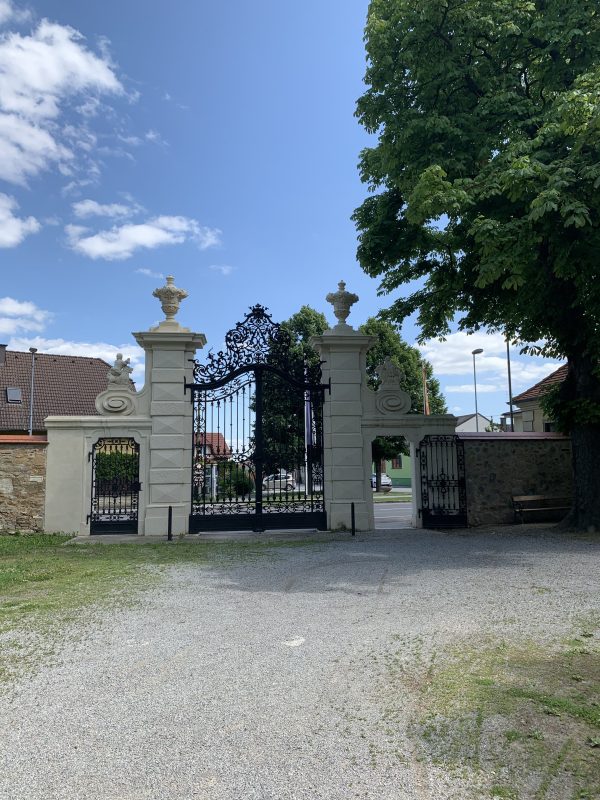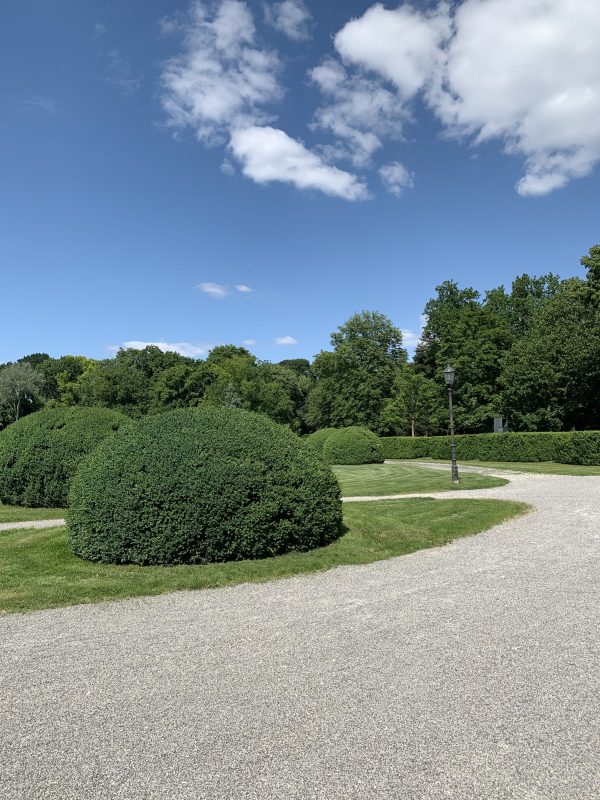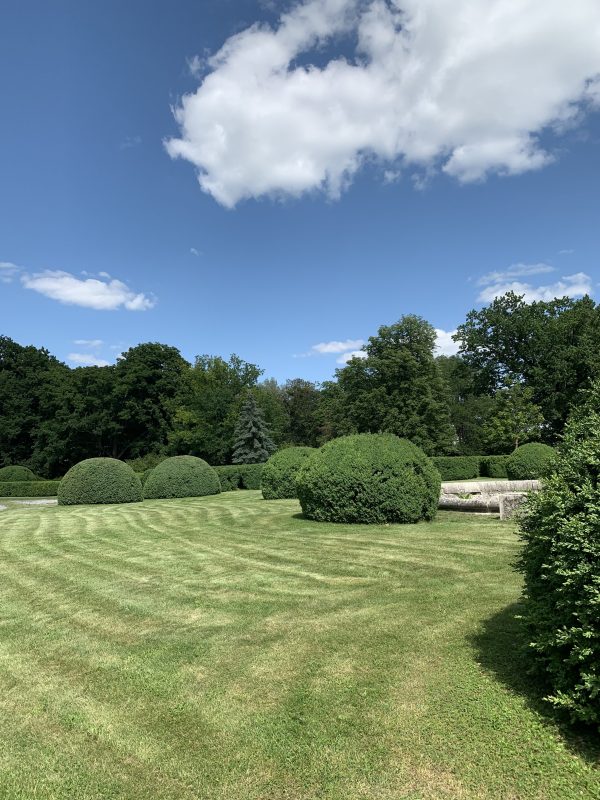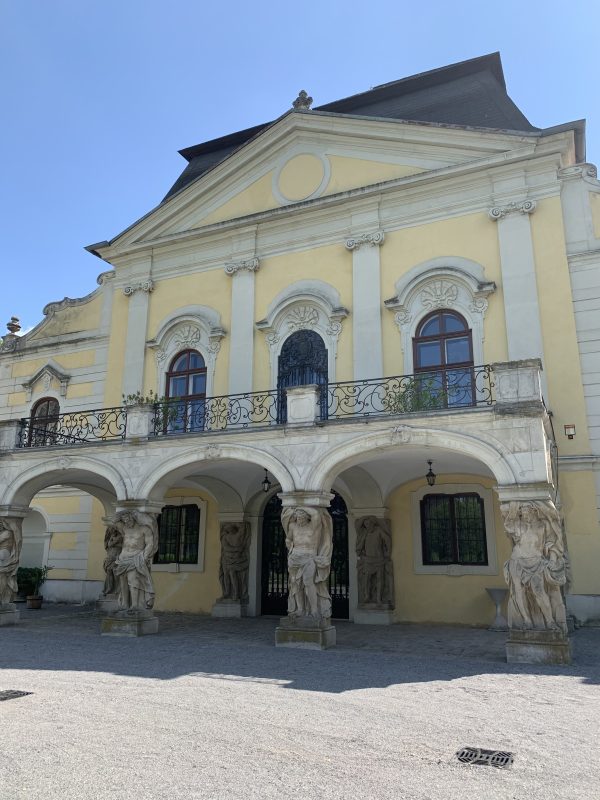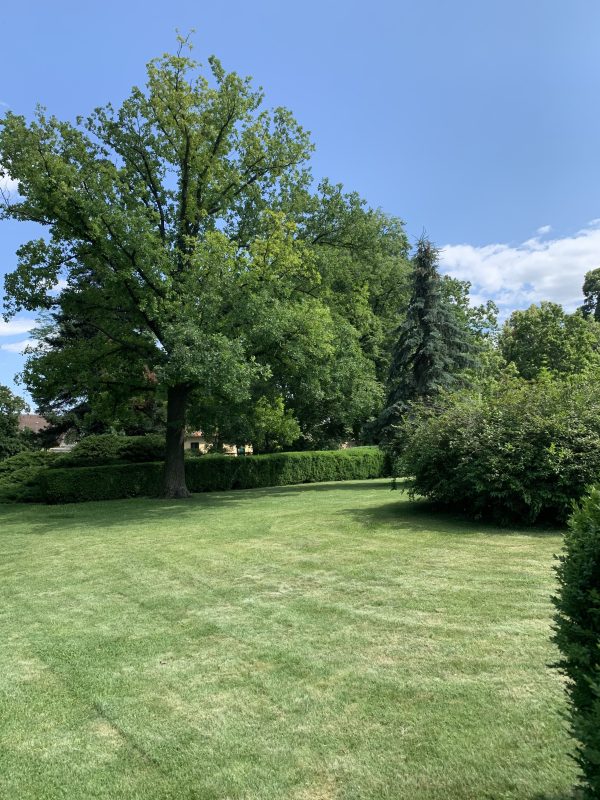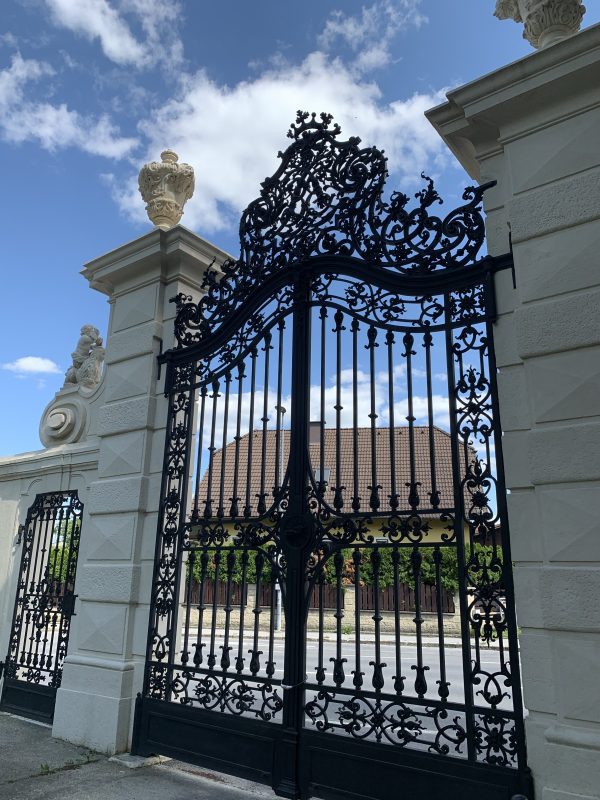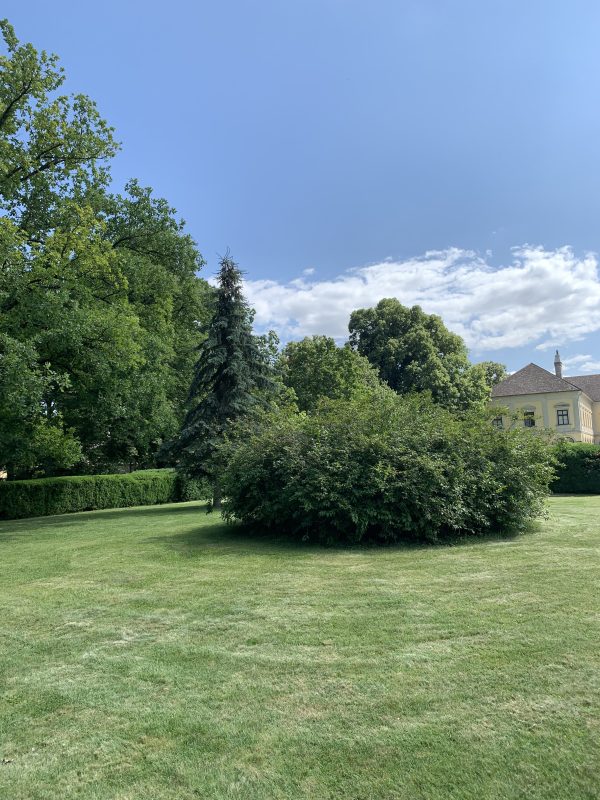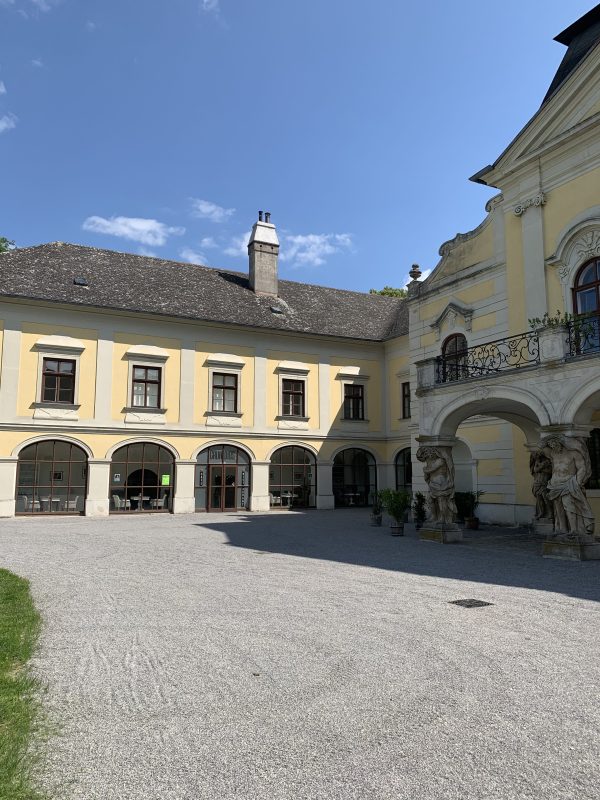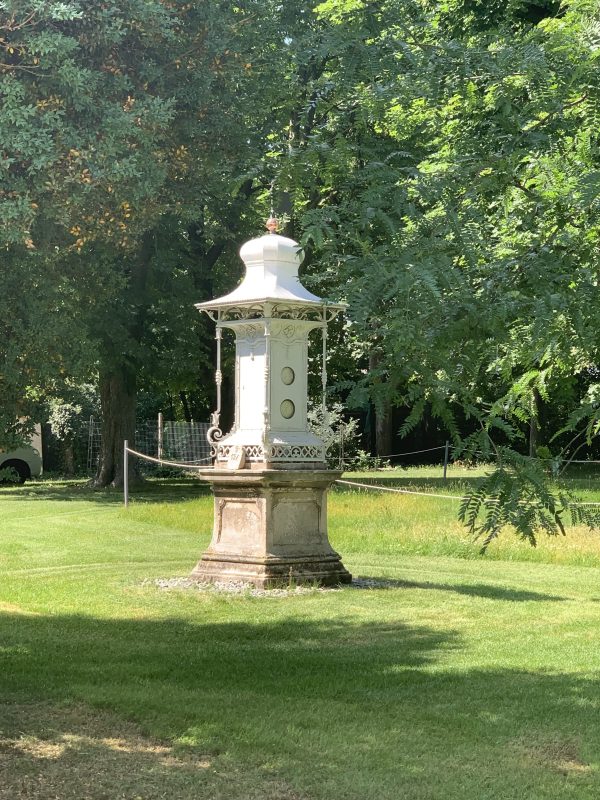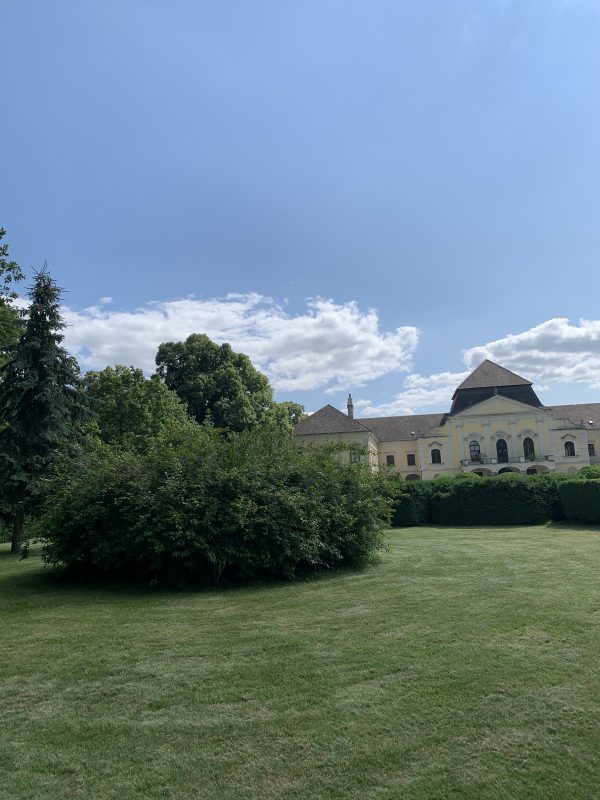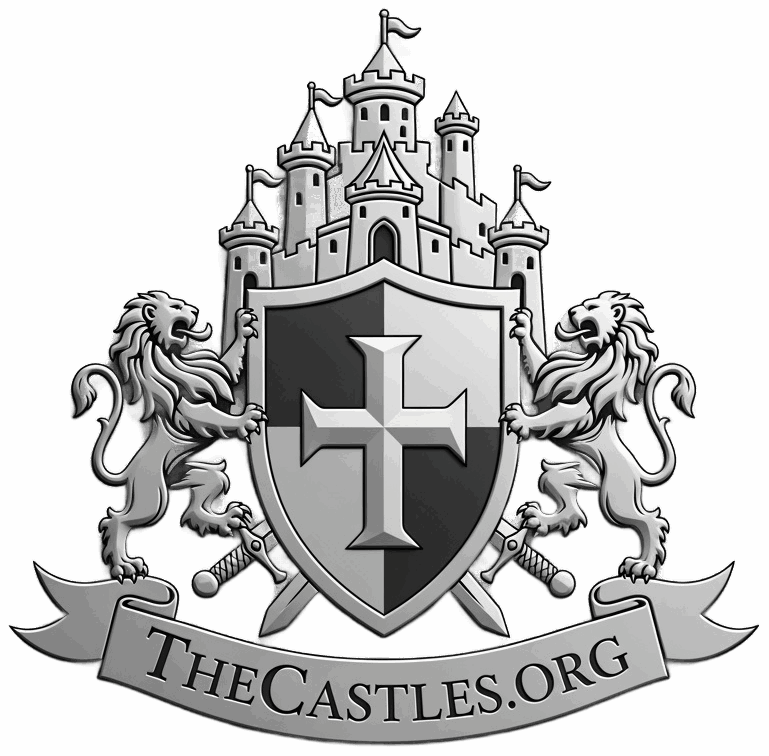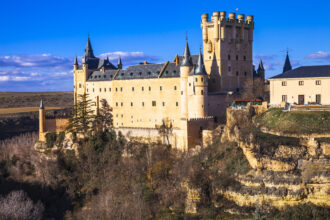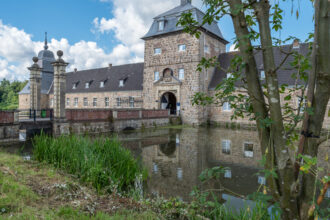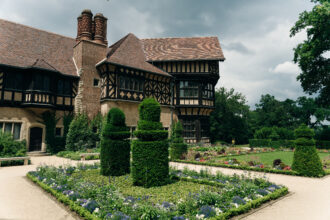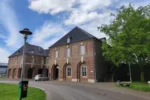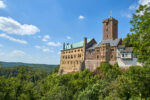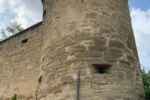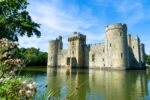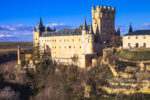One of the most important sights in northern Burgenland is the Baroque Batthyany Castle, also known as the New Castle. It is located in Austria’s largest apricot-growing community, the 3,500-strong municipality of Kittsee. The magnificent castle lies on the edge of the town center. I was able to park my car free of charge in a nearby public car park. I walked to the castle, which is surrounded by beautiful parkland. Through an ornate wrought-iron gate, I entered the beautiful castle park with its large shady trees and flowering flower beds. After a few minutes’ walk along the beautifully laid out gravel paths, I reached the castle. The history of the castle dates back to 1666, when Johannes Count Listy, hereditary owner of the Kittsee domain, expanded a farmstead dating from the early 17th century into the two-winged, horseshoe-shaped “New Castle.” Of the four corner bastions of the fortified complex at that time, the masonry of the southeastern bastion still stands. A stone basket-arched portal with a Latin inscription naming the builder with all his titles commemorates this extension. Between 1730 and 1740, under Paul Anton Prince Esterhazy, the Renaissance complex, originally with onion domes and an open staircase in front of the courtyard façade, was rebuilt and given a Baroque style. The date 1737 on the old roof truss bears witness to this conversion. Today, the staircases with their wrought-iron railings and the ballroom on the upper floor with its remarkable stucco ceiling still reflect the splendor and joie de vivre of the Baroque era. Joseph Haydn conducted musical performances in this ballroom, and Empress Maria Theresa was a frequent guest at the castle. In 1870, the Kittsee estate passed to the Batthyany family, which is where the castle gets its current name. The most important member of the family was Dr. Ladislaus Fürst Batthyany-Strattmann. He was beatified in 2003 for his services as a “doctor to the poor.” The last changes to the exterior and interior architecture were made in the spirit of historicism. The portico of the altane, supported by eight atlases, was transferred from the archbishop’s palace in Pressburg to Kittsee in 1909 and placed in front of the central pavilion on the park side. At the same time, the former castle passageway was converted into a house chapel. The library in the east wing, designed in the historicist style, the small ballroom adjoining the large ballroom to the west with two neo-baroque tiled stoves, and the Batthyany coat of arms, which appears several times, date back to this period, as does the park, designed as a landscape garden based on the English model, with its wrought-iron entrance gate, pond, and lion staircase. In 1969, the castle became the property of the municipality. Extensive restoration work on the castle and park has been carried out over the past decades, with efforts made to preserve the architectural condition and only make changes where necessary to adapt it to the needs of the “Ethnographic Museum” that was housed there since 1972, which unfortunately closed in 2008. To this day, concerts of the Pannonian Forum have been held in the castle for over 30 years. I was fascinated by this baroque castle gem with its beautiful park, which I would never have expected to find in Kittsee.
